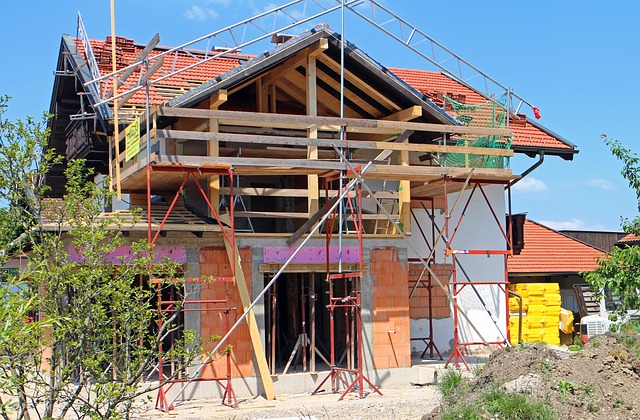Over the past few months, I’ve received a number of queries about property renovations and proving the 2 year “empty house” condition. This is the rule that says a dwelling must have been unoccupied for at least 2 years, before contractors can charge the 5% reduced rate of VAT.
VAT Notice 708, paragraph 8.3.2, explains that contractors may have to provide evidence of the property’s occupancy status to support any reduced rated work. The Notice suggests council tax records, the Electoral Roll and information from utility companies. The Notice then goes on to say:
“If you hold a letter from an Empty Property Officer certifying that the property has not been lived in for 2 years, you do not need any other evidence.”
I get queries about this issue come from both property owners AND from contractors. In nearly all of these cases, the council has either refused to provide an “empty property” letter because of data protection laws, or the evidence doesn’t exist. The circumstances differ according to the facts, but I’ve seen a number of situations when you can’t get evidence from the usual sources.
Proving the 2 year “empty house” condition
At this stage, it’s worth pointing out that the VAT legislation doesn’t state that evidence must be provided or give any details about the type of evidence. At the end of the day, it’s a matter of convincing HMRC that the property has been empty, based on evidence. There isn’t much in the way of precedent from the Tax Tribunal, although there is one case that shows what is NOT acceptable.
G S Bhachu; reference TC/2012/07473 was an appeal against an assessment for VAT on a renovation. Mr Bhachu charged 5% for his construction services. Unfortunately, HMRC wasn’t satisfied with the evidence Mr Bhachu provided in support of the property’s occupancy status. He didn’t provide any of the evidence mentioned in Notice 708, para 8.3.2 and his other evidence just – mostly Mr Bhachu’s comments about the state of the property – wasn’t good enough.
What is interesting about this ruling, however, are the comments made by the judge about the efficacy of certain evidence; for example that a formal signed and dated statement from the property owner would have helped.
Alternative evidence
In these circumstances, the best approach is to put together as much documentation as possible, along these lines:
- if the council tax bills show that there were no occupants during this time, this would be ideal evidence. However if council tax was charged, HMRC may take this as evidence that the property was occupied.
- A signed and dated statement from the property owner/previous owner outlining the date on which the property became empty.
- A signed and dated note confirming that the client/contractor contacted the local council requesting evidence of the type mentioned in paragraph 8.3.2. The document should include dates of any contact and any reasons given by the council for not providing such evidence; e.g. because such information did not exist, or that they could not release information due to data privacy laws.
- If the original owner left the property to move into residential accommodation, then evidence could be provided to show when the individual(s) moved into the new accommodation.
- Invoices from removal companies showing when the date when furniture was removed
- Signed statements from neighbours confirming that, to their knowledge, the property has not been occupied during the period concerned.
- The utility bills for this time were presumably noticeably lower during this time. Comparison with the bills for the time that the property WAS occupied could help to confirm that the property was unoccupied.
You need to consider any possible source that could either verify, or at least indicate, that the property has been unoccupied during this time. You may need to be inventive in your thinking, but it should be possible to find some evidence to confirm the house’s occupancy status!
Check out my e-books and learn how to save time, hassle and money on property developments.
You can buy my ebooks, which include one for those of you developing property for your own home: VAT for DIY property developers, or for those of you developing as a business activity:VAT for residential property developers and contractors.
Alternatively, you can buy the paperback versions from Amazon.co.uk.
But if you can’t get the “traditional” evidence, then how do you prove the 2 year “empty house” condition?
Ultimately, it’s up to the contractor to decide whether to risk charging 5%, because it’s their liability if HMRC don’t accept the evidence.
And, what if HMRC does not accept the evidence?
The only way to be certain that HMRC accepts the evidence in this case would be for the contractor to request a written ruling from HMRC. Otherwise, HMRC may review the issue in the course of a VAT inspection.
In either case, if HMRC does not accept the available evidence, there are 2 options:
- either appeal the decision; or
- pay the under-declared tax.
To protect against any such liability, the contractor could seek some guarantee or indemnification from his client. For example, that the client would either agree to pay any resulting VAT assessment, or that he would share the cost of appealing the decision.
Ideally, any such guarantee should be in writing, e.g. by inclusion in the contract, or as a separate document. In any such situation, it’s a good idea to ask your solicitor to ensure that any such guarantee is legally binding.
These situations can be frustrating because in respect, it’s a matter of proving a negative. HMRC aren’t normally unreasonable about such things, but ultimately you have to be able to show that any evidence is reliable. In the absence of HMRC’s preferred evidence, it can help your situation if you can demonstrate that you have considered a range of different sources and obtained as much “formal” evidence as possible.
Marie
October, 2019

